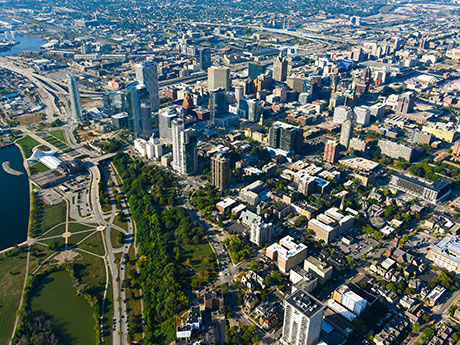By Russ Sagmoen, Isaac Berg and James McKenna, Colliers
The greater Milwaukee retail landscape continues to thrive, with notable activity in regions such as Oconomowoc, Grafton, Franklin, Oak Creek and the Racine metro area. Franklin and Oak Creek have experienced steady growth over the past decade and are well-positioned to maintain this momentum.
Meanwhile, Racine County has seen a surge of recent activity, largely fueled by Microsoft’s announcement of a $3.3 billion state-of-the-art data center in Mount Pleasant. The Racine/Kenosha I-94 corridor serves as a vital connector between the Milwaukee and Chicago MSAs, enhancing its attractiveness for economic expansion.

Market-wide, we are seeing a great amount of activity from local and regional retailers/franchisees and a slowdown from national brands. While there is some activity from national retailers, they tend to be selective about their site choices, highlighting the importance of prime locations and price sensitivity. Because of this, the majority of retail activity is driven by local and regional enterprises.
New retail product is scarce, with a lack of new construction due to rising interest rates and increasing land and construction costs. This has resulted in a decline in multi-tenant strip centers, with the bulk of new construction coming in the form of single-tenant quick-service restaurants and drive-thrus.

Another notable trend is the rise in unique and non-traditional retail spaces, which reflects a shortage of conventional options and an increasing demand for experience and service-based retail. Additionally, the medical retail (med-tail) sector is increasingly active as these businesses seek greater visibility, signage and accessible parking. The demand for med-tail is high, yet challenges remain with high build-out costs and limited tenant improvement allowances from landlords.
Additionally, some retailers, such as Buffalo Wild Wings and Panera Bread, are pivoting their real estate strategies and models to focus on smaller footprints for drive-thru and carry-out-only locations.

The downtown market is experiencing a revitalization fueled by strong economic and demographic trends. Approximately 31 percent of all city-wide jobs are located downtown, and the residential population has increased by 21.2 percent since 2010, adding over 7,800 new jobs to the area. Major companies such as Northwestern Mutual, Rite Hite and Fiserv are playing a critical role in this growth, which has led to enhanced retail activity.
Since 2010, nearly $5.4 billion in new projects have been completed in downtown locations, underscoring the area’s long-term economic viability and increase in interest from retailers.
The recent Republican National Convention in Milwaukee has further bolstered the notoriety of the city and had a positive impact on the hospitality sector. With thousands of attendees, hotels experienced a significant surge in occupancy and revenue, many reaching full capacity well in advance. Hosting such a prominent event positions Milwaukee as an attractive destination for future conventions and tourism, something that is sure to benefit the region’s retail and hospitality sectors moving forward.
In this evolving landscape, southeastern Wisconsin presents a compelling mix of traditional retail growth and innovative trends, creating a dynamic environment for both investors and consumers alike.
Russ Sagmoen is a partner, Isaac Berg is a vice president and James McKenna is a real estate advisor with Colliers. This article originally appeared in the November 2024 issue of Heartland Real Estate Business magazine.


